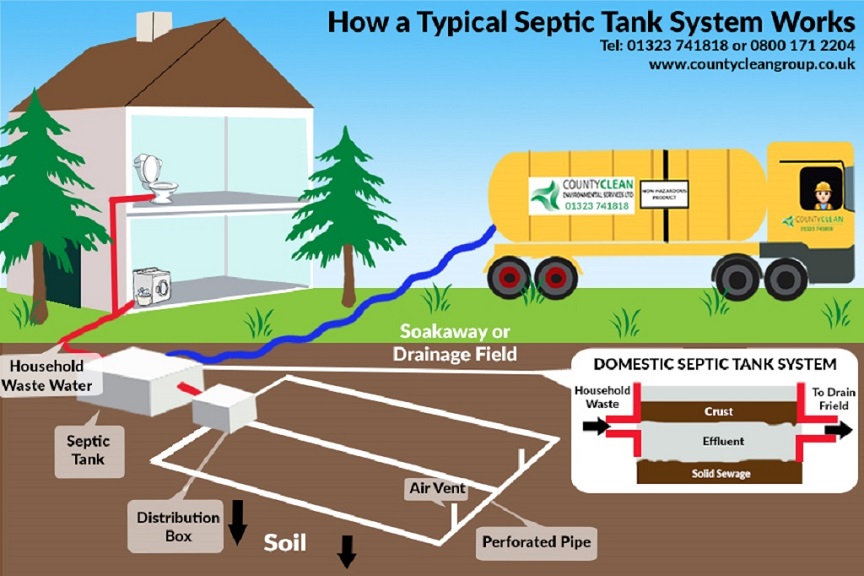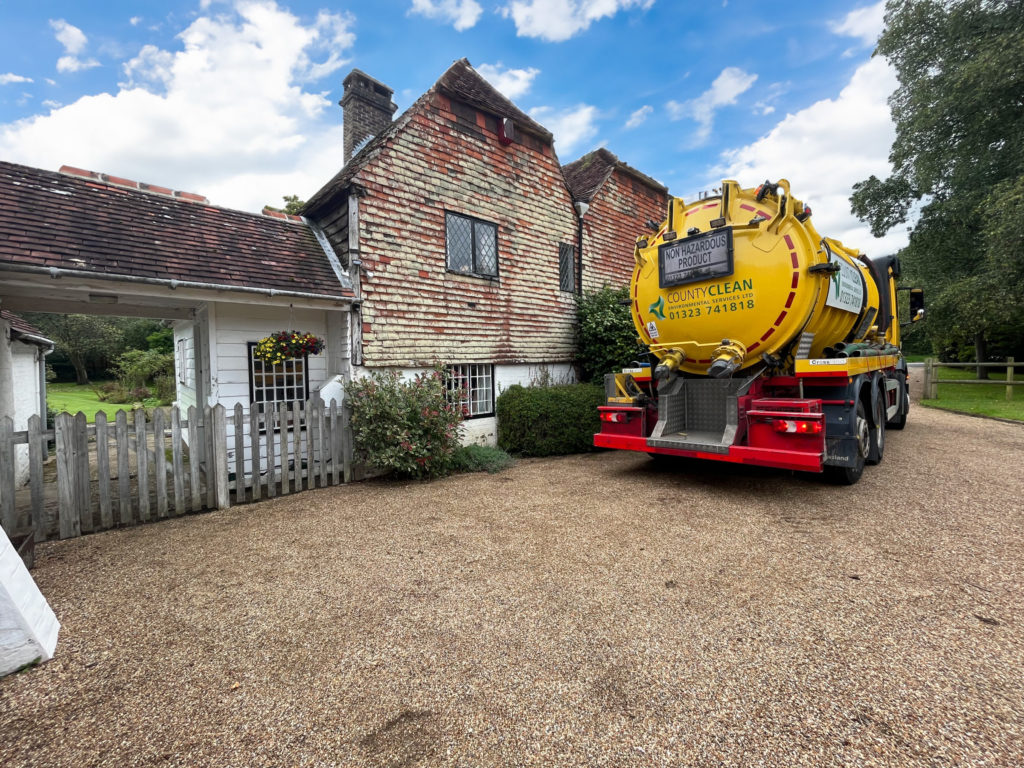Installing a septic tank makes for a relatively easy solution for dealing with sewage and wastewater as long as it is regularly emptied and maintained.
Here is a diagram regarding how septic tanks work and how to maintain them to keep things flowing smoothly. The infographic below helps to explain how a typical domestic septic tank works after installation.

What is a Septic Tank?
A septic tank is a holding tank designed to receive sewage and is primarily a liquid/solid separation system that holds the content for a period and then releases a clarified effluent through an outlet to a soakaway. An anaerobic bacterial environment develops in the tank which decomposes or mineralizes the waste in the tank. As the name septic implies, the sewage entering the tank becomes septic. It is possible that sometimes smells will be detected from somewhere in the drainage system. Some septic tanks may have an electric pump installed after the system to pump the effluent away.
How does a Septic Tank Work?
Having a septic tank installed is very common in rural properties where no mains drainage is available, the purpose of a septic tank is to treat wastewater. It is usually buried underground near the property and will either be rectangular and made of brick, stone or concrete, more modern tanks will be a bottle-shaped plastic tank.
The tank waste contains natural bacteria that digests and separates organic matter to create a layer of crust and solids from the wastewater (the layer of sludge settles at the bottom of the tank – as pictured above).
There are many different types of septic systems, a conventional soakaway-based system (as featured in our infographic) discharges the waste liquid from the distribution box into perforated pipes located in a drainage field (soakaway). The perforated pipes are designed to slowly release the treated effluent into the soil.
Septic Tank Installations
If you are considering a septic tank install, you need to know that the system you are considering suits your needs.
Our fully qualified civil engineering and groundworks teams are able to recommend systems from several manufacturers ensuring a perfect fit for your requirements after a thorough site visit.
We will then carry out the full septic tank install from initial excavation to final commissioning and testing; this ensures that you have peace of mind that you are dealing with one contractor from start to finish whilst ensuring delivery on time and to budget.
Do I Have Any Responsibilities?
If you own, use, or are thinking of getting a septic tank installed, the quality of the discharge and its impact on the environment is your responsibility. You may be held accountable for any pollution caused by your sewage system. You are also responsible for ensuring that:
- Your septic tank is emptied and maintained
- Your septic tank access lids are secure and in good working order
- Any drains to and from the septic tank, including the soakaway, are free-flowing and free from obstructions
If your septic tank isn’t maintained properly it can fail which could then back up and flood your property with raw sewage. To make matters worse it can end up in the local environment causing a hazard to rivers, streams and waterways.
Looking After your Septic Tank after Installation:
Nature makes a septic tank work but over time, the sludge at the bottom of your tank will build up. This sludge has to be removed to ensure the tank continues to work correctly and to prevent the soakaway from becoming clogged. De-sludging should normally take place every twelve months, however this depends on the tank size and usage.
If you know where the septic tank outlet drains to, check that the discharge is a light grey colour. If the liquid includes dark solid material or recognisable sewage solids, this shows that the tank needs de-sludging.
You should plan your de-sludging well in advance to avoid difficulties. If the time is approaching for your septic tank to be emptied or you would like more information and advice on septic tank installations then give our friendly team a call on 0800 171 2204 or 01323 741818.
You must also adhere with the recent updates to septic tank regulations also known as the general binding rules set by the Environment agency coming into force on the 2nd of October 2023.
If disaster strikes we also operate an emergency response call-out service, 24/7.
Call either number and our experienced team will be there to carry out your septic tank emptying quickly and safely.

Septic Tank Emptying Near Me
We operate across the South of England and London, ensuring that we can reach you wherever you are located. Whether you’re in Hampshire, Sussex, Kent, Surrey, London, or any surrounding areas, we’ve got you covered.
Available 24/7 Emergency Service
Our teams are available 24 hours a day – every day. We will work with you to understand what you need to manage your liquid waste disposal & collection and help you find the best solution for your business or home.
